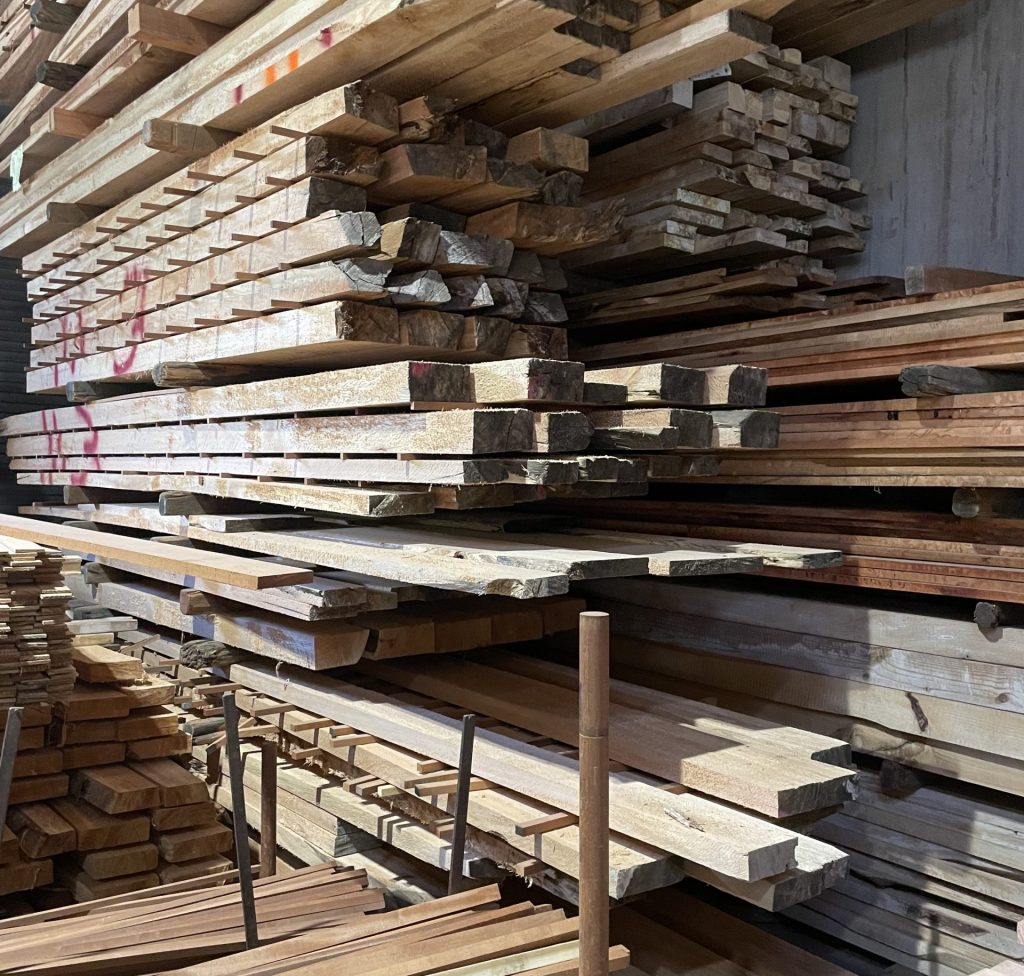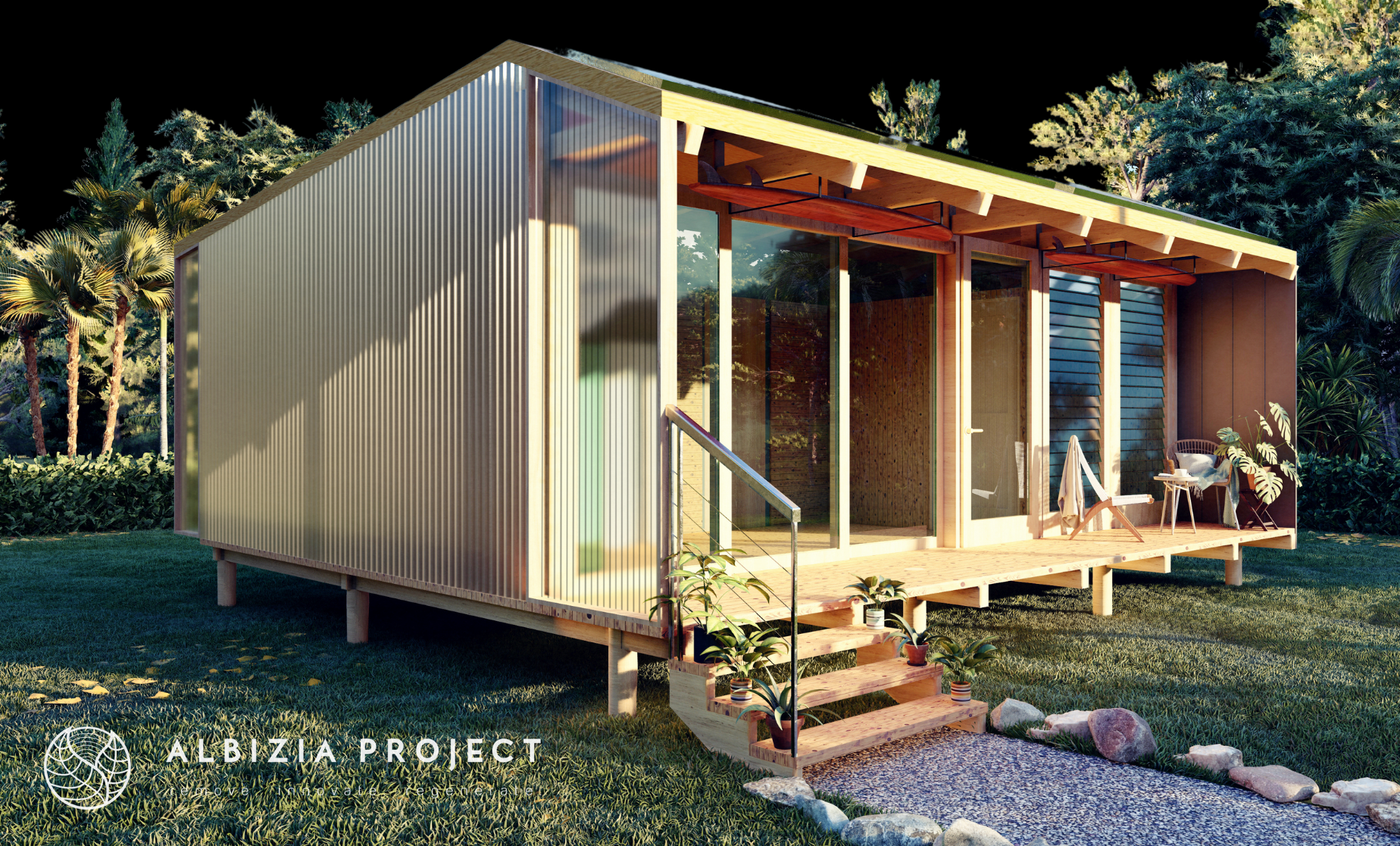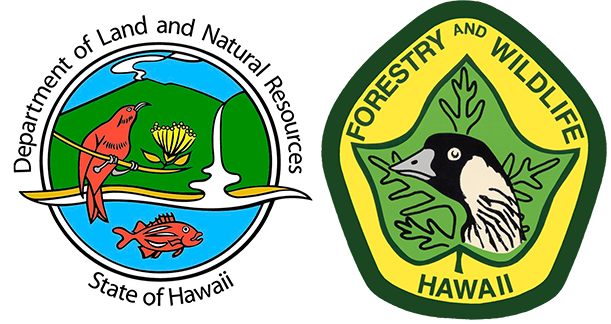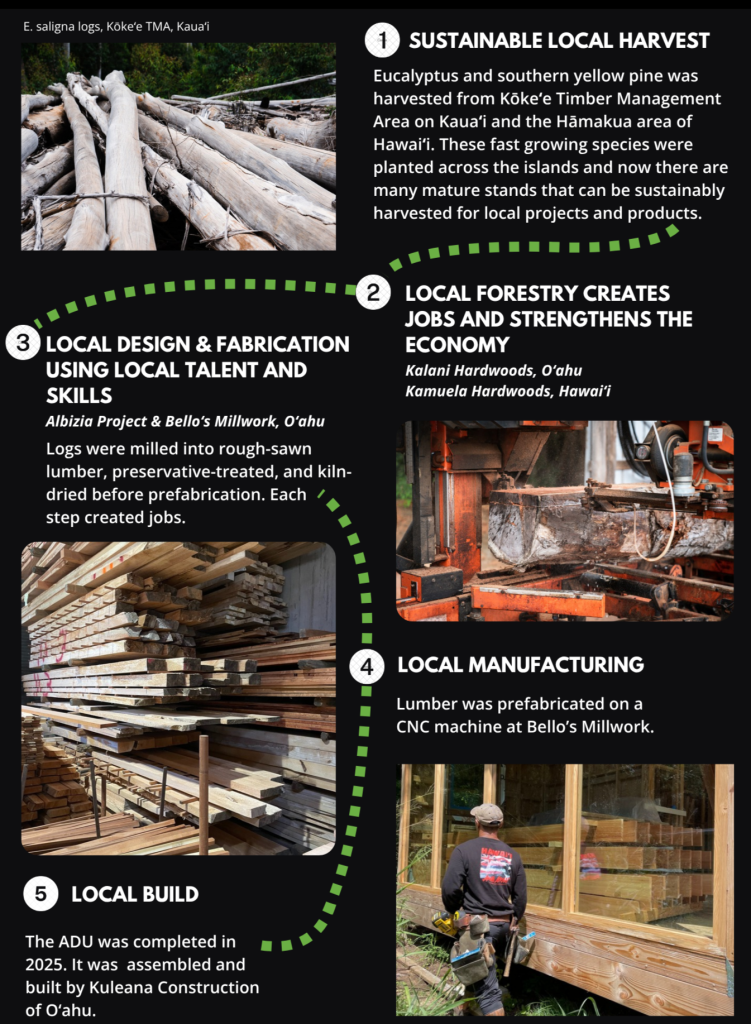Local Wood Products
Harvest local, build local
Hawaiʻi’s rich soils, abundant rainfall, and year-round growing season make it an ideal place for growing trees. In the last century, timber plantations were planted on state and private forest lands. Today, these mature plantations offer wood for local use if local buyers and end users knew about the beauty and benefits of locally grown wood.
Hawai‘i has over 40,000 acres of timber plantations available for use in the local economy. More than 100 million board feet of usable timber are growing in the state’s Timber Management Areas (TMA) alone. Thousands of acres of timber stands have not been managed regularly due to a lack of market for this wood, which has left overstocked forests that could contribute to wildfire risk. The Division of Forestry aims to support the development of a local wood market, utilizing Hawai’i-grown timber species to benefit Hawai’i’s local environment and economy.
 Eucalyptus in Kōkeʻe Timber Management Area
Eucalyptus in Kōkeʻe Timber Management Area
WOOD IS GOOD
Wood is a renewable, biodegradable, natural material that stores carbon. Products made from locally grown wood continue to store the carbon sequestered during the lifetime of the wood products – an eco-friendly choice for Hawaiʻiʻs building and material needs. Sourcing locally reduces shipping emissions, supports the local economy, and creates jobs. Many people who care about deforestation may believe that wood products contribute to forest loss. This is a misunderstanding. There are still parts of the world where forests are cut and converted to other land uses or forest operators who don’t follow good practices; however, today in the US, there are lot of tools and transparency that help consumers understand where their wood comes from and how its managed. Responsible forest stewardship often requires that trees are removed in a manner that minimizes the impact to ecosystem services and managed for the long term health of the trees. Therefore, markets for wood products that originate from responsibly managed forests are very important. The management of local forests is important for land management activities and can, in some circumstances, reduce wildfire risk and invasive species. The harvest of our local wood reduces the fuel load and wildfire risk. Wildfires burn about 20,000 acres in Hawaiʻi annually. More than 25% of the state has been invaded by non-native, fire-prone grasses and shrubs. That percentage grows each time a fire burns a native forest. As a result, wildfires are increasing in frequency, size, and severity on all islands, which threatens communities, agricultural lands, natural resources, and ecosystem services. Local wood usage reduces the carbon footprint of construction projects by avoiding the need to import materials – helping to prevent new invasions by non-native species, such as the Coconut Rhinoceros Beetle or Little Fire Ant. Learn about Hawaiʻi’s Timber Management Areas
In 2012, three large wildfires burned over 3,000 acres of Kōkeʻe Timber Management Area. The 17,092 acre Timber Management Area includes over 1,600 acres of eucalyptus and pine trees. The wildfires released roughly 72,000 metric tons of carbon. This is roughly equivalent to of the emissions of 18,000 cars in one year. To reduce fuel load and utilize the wood in this Timber Management Area, the Division of Forestry and Wildlife partnered with local organizations in an effort to build a tiny home from locally grown timber species. With support from the USDA Forest Service Wood Innovations grant, the team embarked on this project in 2018. The result is Hale Liʻi, a tiny home built utilizing two types of eucalyptus (Sydney gum and rose gum) and southern yellow pine harvested from Kōkeʻe TMA on Kauaʻi and Hāmakua on Hawaiʻi Island. Hale Liʻi is a 400 ft2 accessory dwelling unit (ADU) demonstrating the beauty and benefits of Hawaiʻi grown timber. The ADU was designed to showcase the beauty and utility of our local wood using advanced local manufacturing (5-axis CNC machine). The one-of-a-kind temporary structure is on display at Makiki Baseyard, used by Forestry and Wildlife staff. You can see the structure along the Makiki Arboretum Trail or near the Maunalaha Trail at 2135 Makiki Heights Drive in Honolulu. Concept image of the completed Hale Liʻi from our partners at the Albizia Project Mahalo to all of our project partners including the Albizia Project, Atelier 5 Design, Banzai Meida, Belloʻs Millwork, Kalani Hardwoods, Kamuela Hardwoods, Kuleana Construction, Hawaiʻi Wood Utilization Team, and USDA Forest Service for all of their contributions. The Hawai‘i Wood Utilization Team (HWUT) is a group of experts from various wood-related industries. The team has initiated innovative, cross-sector ideas and projects that expand wood product markets in Hawai‘i. Industries include Forestry, Architecture, Design, Engineering, Wood Products, Construction, Finance, Marketing, and Cultural Practice. This team is grateful to be supported by the USDA Forest Service Wood Innovations grant. HWUT promotes the use of hazardous fuel wood, as well as increasing the visibility, connectivity, and confidence in Hawai‘i wood products and local manufacturing for commercial building markets. Learn about the Hawaiʻi Wood Utilization Team

For the environment

From Harvest to Home: The story of the Hale Liʻi Accessory Dwelling Unit Project

Hawaiʻi Wood Utilization Team
Resources


